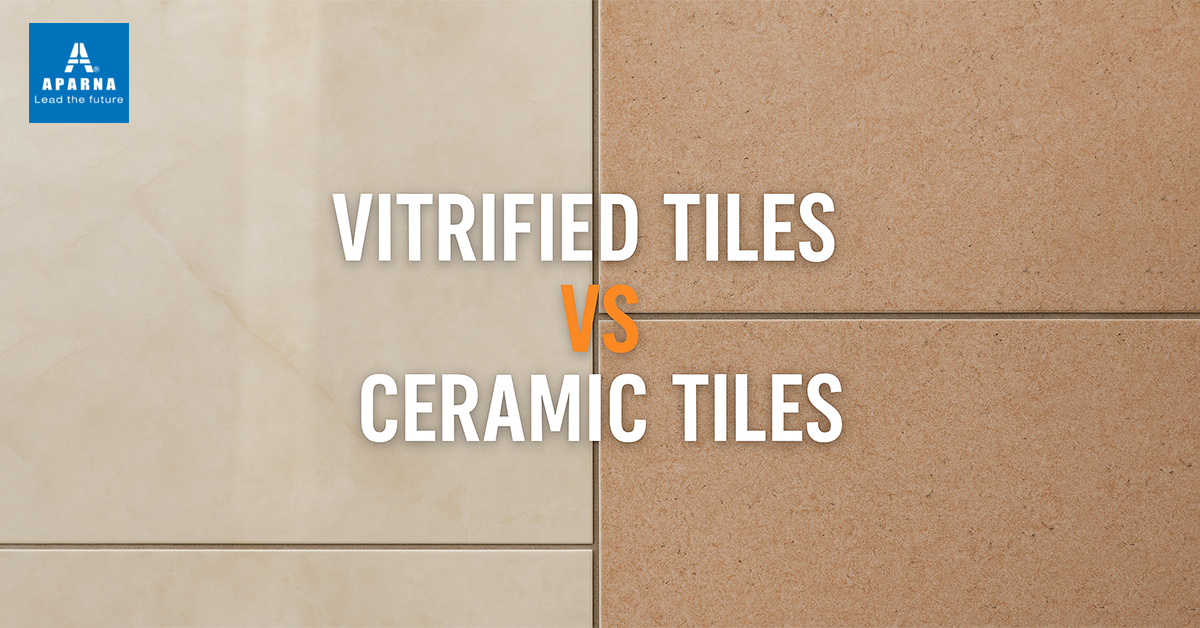Tag: glazed tiles
Vitrified Tiles vs Ceramic Tiles: Which Is Better for Flooring?
When it comes to choosing flooring materials in India, vitrified tiles and ceramic tiles dominate the market. Both offer a wide range of designs and practical benefits, but each has distinct characteristics that make it more suitable for specific needs and spaces.
Understanding the material differences, applications, and performance of these tiles can help you make a better decision for your home or commercial space.
What Are Vitrified Tiles?
Vitrified tiles are manufactured using a mix of silica, clay, quartz, and feldspar, pressed at high temperatures to form a non-porous, glass-like finish. This process makes them highly durable, stain-resistant, and suitable for indoor and outdoor applications. Vitrified tiles are known for their polished look and long-lasting performance, making them a preferred flooring solution in modern Indian architecture.
They are available in a variety of finishes including glossy, matte, double-charged, and digital printed surfaces.
What Are Ceramic Tiles?
Ceramic tiles are made from natural clay baked at lower temperatures compared to vitrified tiles. They are usually coated with glaze for aesthetics and basic water resistance. Ceramic tiles are more porous, lighter in weight, and easier to cut and install, which makes them a popular choice for wall coverings and areas with moderate foot traffic.
They are widely used in kitchens, bathrooms, and interior walls for decorative purposes.
Key Differences Between Vitrified and Ceramic Tiles
| Feature | Vitrified Tiles | Ceramic Tiles |
| Durability | Extremely durable, suitable for high-traffic | Moderate durability, ideal for low-traffic |
| Water Absorption | Less than 0.5%, highly moisture-resistant | More porous, higher water absorption |
| Surface Finish | Glossy, matte, double-charged options | Mostly glazed, limited finish variety |
| Maintenance | Easy to clean, stain and scratch resistant | Needs regular cleaning, prone to staining |
| Installation | Requires skilled installation | Easier to cut and install |
| Lifespan | Longer lifespan | Comparatively shorter |
| Price Range | Higher due to durability and finish | More budget-friendly |
Application Guide: Where Each Tile Works Best
| Area | Recommended Tile Type | Why it Works |
| Living Room & Dining Area | Vitrified Tiles | High footfall resistance, polished look |
| Kitchen Walls | Ceramic Tiles | Lightweight and easy to install |
| Outdoor Balcony | Vitrified (Anti-skid) | Weatherproof and non-porous |
| Bathrooms | Ceramic for walls | Easy to clean and affordable |
| Commercial Spaces | Vitrified Tiles | Suitable for long-term heavy use |
| Bedroom Floors | Vitrified Tiles | Seamless finish and aesthetic appeal |
Why Vitrified Tiles Are a Preferred Choice in India
- Their extremely low porosity prevents water and stain damage, which is crucial for Indian climatic conditions.
- Vitrified tiles offer a seamless and polished look that complements both contemporary and classic interiors.
- They are easier to maintain, especially in large spaces like offices, shopping complexes, or living rooms.
- Advanced printing technology allows vitrified tiles to replicate natural materials like marble, stone, and wood, giving homeowners elegant options at a lower cost.
With their balance of style and strength, vitrified tiles are steadily becoming the top choice in flooring solutions across urban and rural India.

